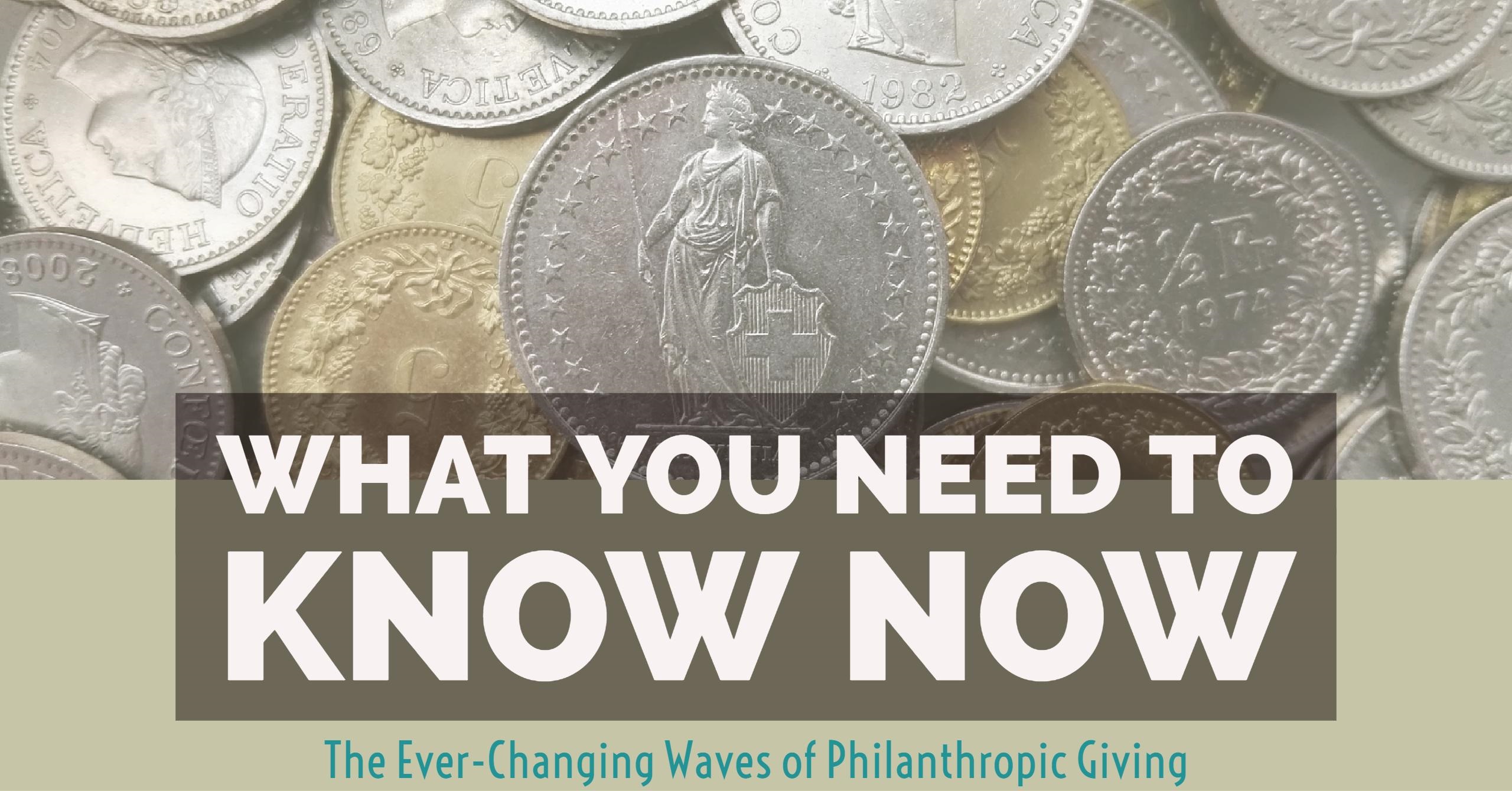Shape Your Stewardship Efforts with the Latest Trends in Philanthropic Giving

By Stefanie Marsden, Relationship Manager at TPF
As a Relationship Manager for TPF and the current President of Dallas Council of Charitable Gift Planners, I spend an inordinate amount of time focused on generosity and philanthropy. Really, what could be more important than a clear understanding of who is giving, why they are giving, how they are giving, and how much they are giving? This is the information that must shape our strategic planning and stewardship/fundraising programs. In case your church or organization is not already proactively monitoring these trends, here are some key insights and actions that you can apply right away. If you want to be successful, you must know what to say and who to say it to!
Let’s Take a Look…
Taken from Giving USA’s Annual Report on Philanthropy for 2016, below you will find five key trends and statistics for you to consider along with how they might drive action within your church or organization:
- Total philanthropic giving for 2016 was $390B, which is a 2.7% increase from 2015.
An increase in giving is ALWAYS a good thing. This should bring hope to those of us focused on raising money to support our missions. Let’s work together to ramp up our efforts and make the most of this wave of generosity. - Online giving grew 14% in 2016.
This shouldn’t come as a surprise to any of us. The popularity of online giving has been steadily increasing for years. As people of all ages become more comfortable with their computers and mobile devices, it just makes sense that they will embrace this convenient method of giving. If you haven’t already, I would encourage you to explore online giving. And if it’s already part of your generosity arsenal, I would encourage you to publicize this offering.
Something to think about: Religious congregations offering online giving increased from 29% in 2010 to 79% in 2016; cell phone text giving went form 4% to 35% in the same time period.
- Most cited reasons for not giving include: I forgot, no one reminded me, irrelevant communication, and inappropriate ask.
Here it is in black and white. The actual reasons why people aren’t giving. What can you do about it? Honestly, these are simple reasons to address. Let’s help donors NOT forget with frequent and carefully crafted communication. We want to ask them to give, but we must be smart and meet them where they are. If they don’t hear us, they can’t listen. AND, we must speak the right language. An email designed for a mature, tenured donor won’t resonate with a younger donor who is just starting down his or her philanthropic path. - The five most philanthropic cities in the U.S. are Dallas, Houston, San Diego, St. Louis, and Tampa.
Wow! I have to admit, this one floored me. So, what does it mean for us? Most importantly, it reminds us that generosity is not concentrated in what we normally consider to be the largest epicenters of wealth. It reminds us to be sure that we spread our fundraising efforts far and wide to maximize the giving potential of those in ALL parts of our country or local area. - Generational giving continues to grow in importance: 14 of the 2016 Forbes 400 billionaires are under the age of 40, $30T could be passed on to the Millennial generation from their families, wealthy Millennials are set to make their mark within their family foundations and beyond.
Buckle your seat belt! The Millennials are coming into their own, and we should enjoy the ride. It’s time to adjust our generosity programs to account for their specific generational needs and characteristics. We must be where they are by leveraging online and mobile channels to effectively reach them. Also, we must engage them with real, moving stories of our mission. Most importantly, never forget that the importance of philanthropic giving is to enhance lives and create a better world.
[addtoany]